Have you ever wondered how it would be if you could grow your pepper and not depend on the poor quality store-bought ones? Well, now you can enhance the taste of your food and the look of your balcony/garden by growing peppers from scraps.
The process is straightforward, and you can grow a bunch of these plants from the kitchen waste you produce. With proper care, a few simple steps, and lots of love, you will soon have a massive harvest of bell peppers to spice things up!
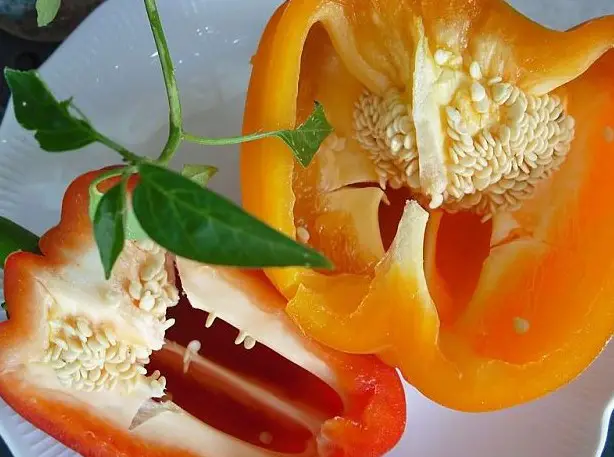
Doesn’t it sound very fresh and organic? Let’s see how it’s done.
Table of Contents
Can I grow bell peppers from store-bought peppers?
It is possible to grow your peppers from store-bought bell peppers. You only need to make sure that the seeds germinate. Once the seeds germinate, the plant will grow fine during summer.
It’s advisable to get the seeds to germinate indoors under constant lighting. Then, get the plant used to the outside over 7-10 days. Harvesting should not be a problem once the roots form and the plant strengthens.
What is the best climate for bell peppers?
A good harvest of peppers depends a lot on your knowledge of temperature tolerance to protect the plant from undesired weather conditions.
According to the Cornell University Pepper Growing guide, it’s ideal for germinating the plants indoors by constantly monitoring the temperature between 70-90 degrees Fahrenheit.
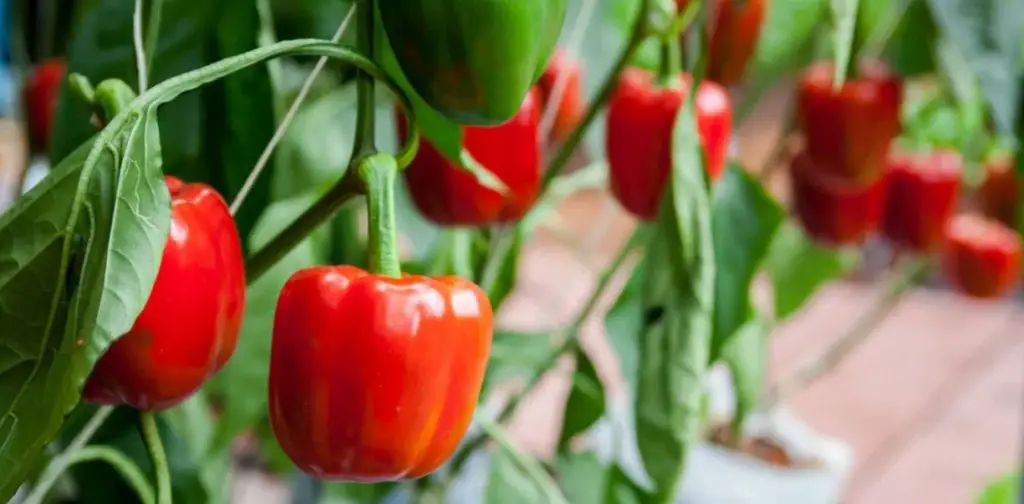
You can constantly transfer the plants outdoors during the night when the temperature is more than 60 degrees Fahrenheit. Bell peppers are delicate plants and require a 70-80 degrees daytime temperature range. They thrive best in areas where the days are long and warm.
Can I grow bell peppers indoors?
Yes, you can grow your bell pepper plants indoors. However, they will never be as large as the ones grown outside. Nonetheless, they will have the same amount of heat.
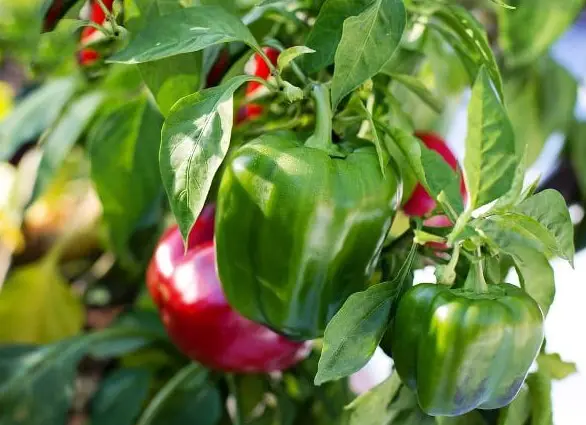
If you want to grow your bell pepper plants indoors throughout the year, you need to opt for ornamental varieties of these plants. Thankfully, you need not do anything special for the indoor pepper plants. Their temperature and other requirements are the same as the ones grown outdoor.
All you need is a container big enough for the roots to form, sunlight (ideally, a south or west-facing window will work), or a grow light.
If you want to replace sunlight with grow light for indoor farming, here’s a guide: Do LED Lights Work For Hydroponics?
How do you know if a bell pepper seed is good?
It’s essential to determine the viability of the seeds before learning How to Grow Bell Peppers from Scraps or else you will end up wasting valuable time on bad seeds.
Thankfully, there are few ways, in fact, tests, that will help you determine whether or not the seeds you selected are worth the time and effort.
Test 1: Soaking seeds
- Take a few seeds and drop them in a cup full of water. You can also use a light chamomile tea preparation instead of water to kill bacteria during the soaking.
- Let the seeds rest for 24-48 hours.
- You will have some seeds floating on the top by the end of the procedure; throw them.
- Now plant the rest of the seeds at the bottom of the container.
Note: Plant the soaked seeds right away.
Test 2: Viability test
Through this test, you can determine whether or not your seeds will germinate.
Things you will need:
- Seeds from the different varieties of pepper.
- Sealed plastic pouches for each seed type.
- Paper towels for each variety.
- Permanent marker.
- Spray bottle.
Steps:
- Wet the paper towels and fold them into small squares.
- Place the seeds into each of the paper squares.
- Fold the towel with the seeds inside, making sure the seeds come in contact with the towel.
- Place the towels in the different sealable bags and label the variety names.
- Place the pouches in a warm area.
- Check the towel daily for signs of germination, spray the towels to keep them moist.
This test will tell you which seeds will germinate and determine the rate of germination. The Bad Seeds will not germinate or their germination process will be very slow (more than 2-3 weeks) if you put them through above steps I mentioned.
How to Grow Bell Peppers from Scraps?
Growing bell pepper from scrap is a pretty straightforward process, and with the right preparation and technique, you can get some hot peppers blooming in no time.
However, to get a good harvest make sure you monitor the temperature well and meet the nutrients requirements of the plant.
Things you need:
- Seeds from mature and ripe bell pepper scrapes.
- Clean towel.
- Tray.
- Containers.
- Spray bottle.
How to Grow Bell Peppers from Scraps: Step by Step Guide
Collecting Seeds from Scraps
When choosing bell pepper scraps from leftovers, make sure you pick the ripe and mature ones. This is because overripe bell pepper naturally has more seeds and delivers the best results.
Using a knife or blade slice the bell pepper scraps and remove the seeds. Spread out the seeds on a clean tray and keep in under the sun. You can also use a clean paper towel instead of a tray.
Get the seeds dry
Dry the seeds in sunlight for two days or wait till they are dehydrated. But it is advisable not to leave them in harsh sunlight for extended hours as it might lead to viability loss. However, you can place the seeds in a cool shade for further drying.
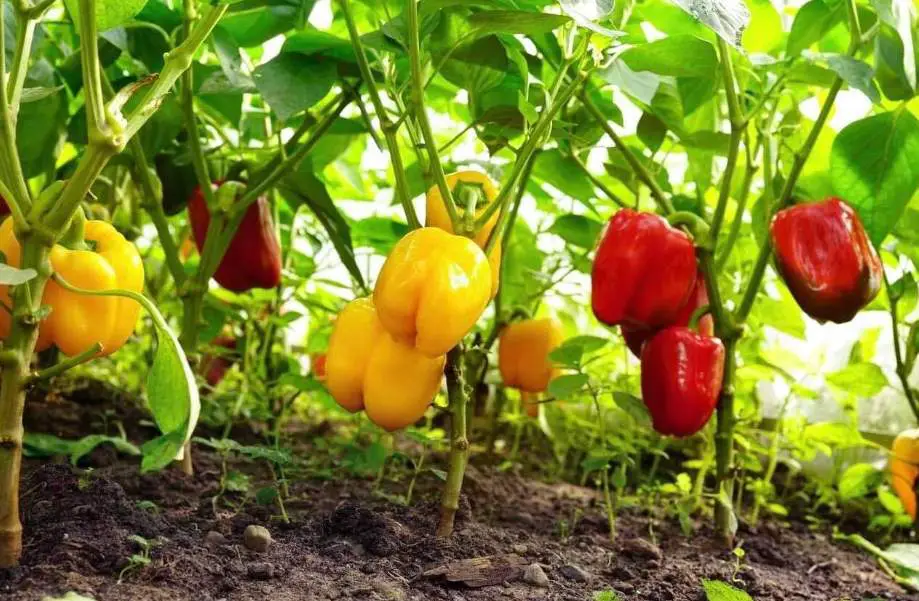
Germination
Bell pepper seeds take 2-3 weeks to germinate. For the best possible germination, you can try the following conditions:
- Place the seeds in a warm indoor area with a temperature range between 75o and 80o F.
- Use a proper light source.
- Get weather information on frost beforehand to have a successful transplantation.
- Once you have planted the seeds, keep the soil moist.
Planting Seeds
After the germination process, when your plants have true leaves, it’s time to put them in larger pots to allow healthy root growth. It’s advisable to keep the plants inside till the last frost dangers pass, and after two weeks, you can transfer the plants outdoors.
Observe The Different stages of growing
Bell peppers often require warm and moist soil, especially during the early growing stages. You can put a black plastic to allow the plant to absorb excess sunlight.
In addition to heat and warmth, bell pepper plants require direct sunlight; thus, keep them under direct sunlight while transferring them outdoors. If you live in a high climatic area, you can use a shade cloth if required.
Once the plant has matured and has a few layers of leaves, it’s time to add some fertilizers with low nitrogen. These fertilizers aid in good production.
Besides, it’s essential to monitor the watering. Bell pepper plants need warmth to thrive, but they don’t do well with heat. Thus, if you live in a hot climate, watering the plants twice a day will be required; however, don’t overwater the roots as it might lead to low calcium levels in the soil.
Finally, check for signs of infestation like brittle leaves or fruits with holes and spray organic pesticides to control the infestation.
Harvesting
You can harvest the peppers once you like their size and color. It’s also important to note that the longer the fruits stay on the plant, the sweeter they get.
Here are a few tips to consider before harvesting the fruits:
- The harvesting time for bell peppers depends on the variety and is mostly between 60-90 days.
- Green bell peppers are usually bitter; if they are left on the vine, they turn yellow, then orange, and finally red which is the sweetest variety.
- Use a knife to cut the fruit from the vine; using your hands might damage the plant.
- It’s advisable to leave a one-inch stem behind when harvesting.
What is the Benefit of Growing Bell Pepper from Scraps?
You will be surprised at the many benefits of growing bell pepper from scrapes. Though there are multiple, we have listed only a handful here.
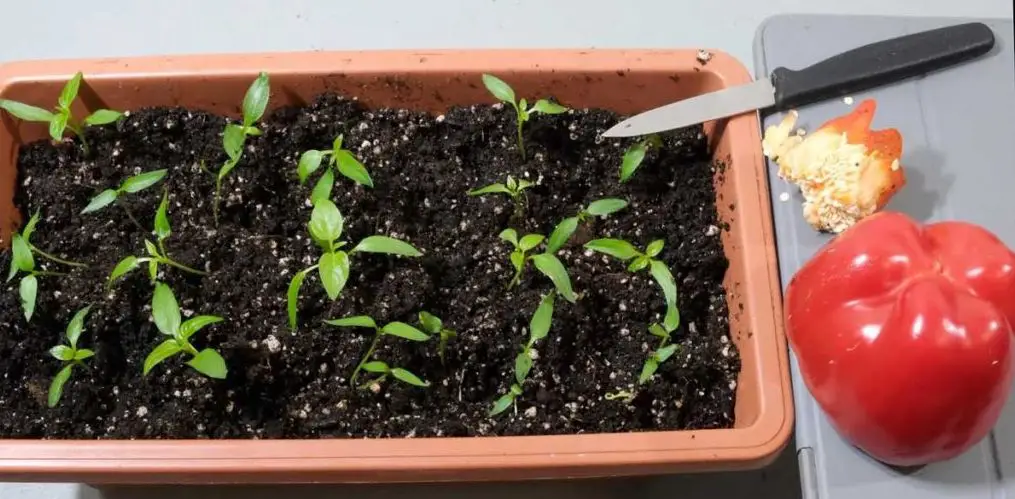
Gardening
Growing your pepper is a fun activity. Not only will you have fresh homegrown peppers to spice up your food, but you will also enjoy the entire process.
Reducing waste
Every gardener wants to see a future where people appreciate and encourage the use of homegrown food. Additionally, if you grow your pepper at home, you save money and eliminate waste production.
Minimum time requirement
As discussed in the article, growing bell pepper from scrapes takes only a few steps. You can do it outdoor or indoors, and you only need a small patch of land or a container to grow these.
Kid activities
Gardening activities can teach kids important lessons on kindness, care, responsibility, and environmental awareness. Your kids also get to learn all about plants and their lifecycle. Finally, since gardening is engaging, your kids are sure to stay occupied for long hours.
Health benefits
Bell peppers have a trove of benefits:
- It’s good for the eyes.
- Bell peppers have anti-cancer properties.
- Loaded in multiple vitamins.
- A large number of antioxidants.
- Great source of hydration.
- It has low calories and carbohydrates.
- Helps clear skin.
Frequently Asked Questions (FAQs)
01. What is the fastest way to germinate bell pepper seeds?
Though there are many ways to germinate pepper seeds before planting them in containers, soaking the seeds is the fastest method. As mentioned in the article above, you can either soak the seeds in water or tea.
This process especially applies to seeds that have been dried. Additionally, if you opt for tea, the chemical inside the tea speeds up the germination process.
02. Should pepper seeds be soaked before planting?
It’s not mandatory to soak the seeds, however, soaking does soften the seed shell. It’s advisable to use Chamomile tea as it doubles up the germination process and functions as an anti-fungal treatment before you plant the seed.
03. Can you plant pepper seeds directly on the ground?
Yes, you can. But there are some reasons why you shouldn’t do it. First, pepper seeds cannot tolerate frost; the plants will either die or have stunted growth if affected by frost. Additionally, pepper plants need warm soil to germinate well with a temperature between 85 degrees F.
So, if you want to plant them directly in the ground, it has to be later during the spring months. However, if you wait for a long time in an area with a short growing season, you could lose the plant to frost.
04. How long do bell pepper seeds need to dry before planting?
The seeds should ideally dry for 6-7 days before you proceed with planting them.
05. When should I plant pepper seeds?
Pepper plants require warmth and sunshine to thrive. Warmth is crucial for germination and to encourage the growth of seedlings. Thus it’s advisable to plant the seeds indoors or undercover. Seeds should be sowed during late winter or early spring, two months after the last frost passes.
06. How long does it take to grow peppers from seeds?
Though the time required for the seeds to grow depends on the type, it’s anywhere between 4-5 months, i.e., 100-150 days.
07. How deep do you plant bell pepper seeds?
Ideally, you should plant your bell pepper plant a quarter of an inch deep in the soil. Make sure the plant gets enough warmth but is not under direct sunlight.
Conclusion
Having a kitchen garden growing fresh pepper will add great taste to your food and make your property look cute. Besides, there are many benefits of consuming proper and ones that you grow will also be environment-friendly and reduce waste to a great extent. Thus, there’s many benefits if you learn how to grow bell peppers from scraps.


